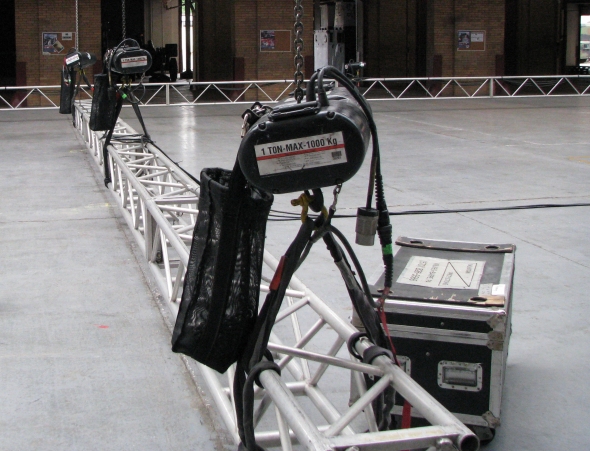It can be seen at practically every arena, theater, concert and event. It has been a key component of entertainment rigging and critical for every rigger to understand. From roof grids and towers to sound delays, truss is the framework that makes production possible. That being said, a general understanding of the basic aspects of trussing can be extremely helpful when planning your event. I recently reached out to Angel Hicks, Design Specialist for James Thomas Engineering, for insight on some common questions that customers often inquire about truss.
Q: What determines the capacity of truss?
Angel: Truss capacity is based on the material used to build the truss, the type of connection and the height of the truss. A general rule states that the taller the truss, the stronger the truss. While height is a factor in truss capacity, the width does not necessarily change the strength. An example can be seen in our load tables for GP 12×12 and GP 18×12. GP (General Purpose) Truss is ideal for conference, exhibition and small venue work.

Truss grid at Education Nation
Q: What’s the difference between a fork end and plated connection point?
Angel: Forks allow a load to transfer more efficiently than plates. James Thomas’s Supertruss features double ended connectors that increase the strength of the truss. Supertruss is also made with a thicker wall material that contributes to its strength. Forked connections also speed up the construction time of a system. James Thomas offers a pin puller tool to assist in removing difficult pins, making the setup and teardown process easier.
Q. Should I rig my truss with welds or round slings?
Angel: Rigging points can be welded directly to the truss, or by the use of couplers or grab bars. When using grab bars, it is best to sandwich the truss’s bottom chords (only when the rig is in box configuration). Rigging should always be placed at the nodes of the truss (the point where two diagonal members make a triangle). When rigging using round slings, take note that the capacity changes based on how they are used (vertical, choke or basket). Use a basket for the highest capacity. Temperature also plays a role on which sling should be used.

Using round slings to rig truss at the Kingston Armory
Q: What about customized truss shapes?
Angel: While trusses can come in various shapes, James Thomas typically focuses on square, triangle and rectangle profiles. Other custom profiles can be created, such as trapezoids, parallelograms, etc., and any profile tube can be rolled to create circles and ovals. Custom angle corner blocks are great in allowing clients to create custom shapes using straight sections of truss, rather than customizing a truss profile.
A big thanks to Angel Hicks for the advice and expertise on trussing! Mountain Productions’ Rigging department carries a wide variety of truss products. If you would like to learn more, visit our website or give us a call today.



